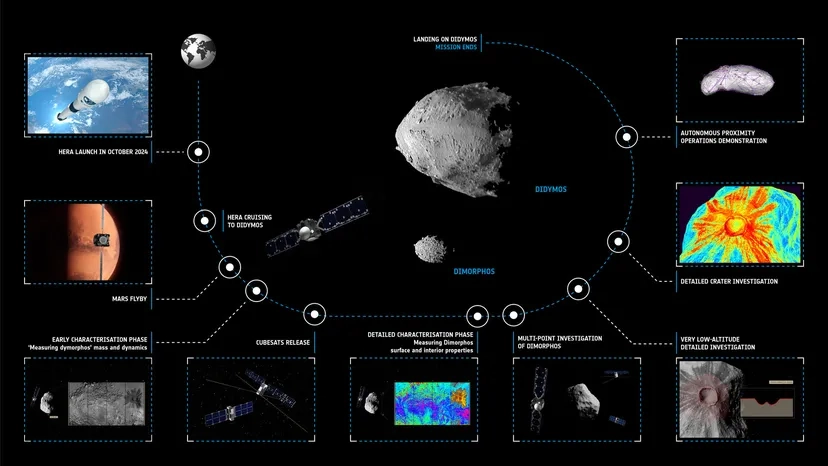In October of this year, the European Space Agency (ESA) plans to launch the Hera probe to thoroughly investigate the Didymos and Dimorphos double asteroid system. This mission will follow up on NASA’s experiment, during which the DART probe collided with Dimorphos in 2022. This collision was intended to test whether Earth could be protected from an asteroid threat by impact. ESA aims to gather more precise data on the impact and its consequences.
Since Dimorphos’ orbit has been altered and little is known about it, the probe risks colliding with the asteroid due to the slightest error. Hera will have to navigate autonomously, using a specialized Guidance, Navigation, and Control (GNC) system similar to the autopilot in cars. The primary tool will be a high-resolution camera, which will help distinguish asteroids from stars against the backdrop of the sky.

The system is designed to assist the probe in approaching targets up to one kilometer away. This process is already being tested in Spain and Germany using replicas of the original equipment. According to ESA GNC engineer Gil Fernandes, the Hera interplanetary travel systems have been fully tested using the current spacecraft flight model.
The main objective of the Hera autonomous mission is to understand what happened to Dimorphos, the smaller of the asteroids that the NASA DART probe collided with. This data will aid in the development of planetary defense systems. Navigating through the double asteroid system, where the gravitational field is tens of thousands of times weaker than Earth’s, presents significant challenges even for space missions.
The collision with the DART probe altered Dimorphos’ orbit and likely significantly affected its shape. Thus, the Hera mission is expected to provide critically important data for future Earth asteroid defense systems. The entire process involves careful planning and testing to ensure the successful completion of the mission.
Hera is scheduled to reach the double asteroid system in October 2026. Prior to this, it will spend 2 years accelerating using the gravitational field of Mars and will capture images of its moon, Deimos. This will allow for the testing of the probe’s navigation equipment and cameras.









